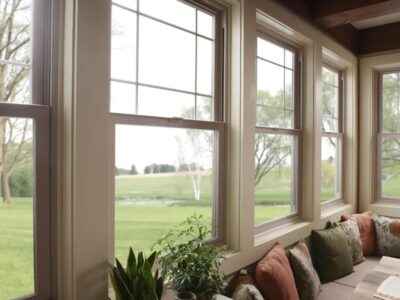Making sure your attic is well-sealed and properly insulated is one of the most important things you can do as part of your ENERGY STAR Home Upgrade to reduce the air leaks that contribute to energy waste and make your home less comfortable. Count on ENERGY STAR to help you make your energy choices count for a clean energy future with information on how to measure your levels, choose the right insulation type and hire an insulation contractor. Our Home Upgrade Service Provider Partners can help guide you through what is right for your home.
Do I Need More Attic Insulation?
Low insulation levels and air leaks in your attic cause your heating and cooling systems to work harder, leading to energy waste and discomfort during both summer and winter. If your attic insulation is at or below the level of the floor joists, it’s likely you need to add more.
Check Your Attic Insulation Level
Step 1: Access Your Attic
If you have stairs or pull-down stairs to your attic, accessing it is straightforward. However, if you only have an attic hatch or cover, you’ll need a ladder. Bring a flashlight, a ruler or tape measure, and your cell phone to take pictures.
What Type of Insulation Should I Choose?
The type of insulation you choose often depends on the nature of your project. Different types of insulation require varying levels of skill to install, which may influence your decision to either hire a contractor or do it yourself.
Choosing The Right Type of Insulation
A chart can provide information on different types of insulation, which projects they are best suited for, and the relative skill level needed for the average homeowner to install them.
How Can I Make This Upgrade More Affordable?
You can reduce the cost of your attic sealing and insulation project by utilizing federal tax credits and utility rebates available in some regions. Special financing programs are also available for low-to-moderate income families. Assistance is available to help you navigate the process and maximize your savings.
Financial Incentives
Rebate Incentives
Rebates for air sealing and insulation may be offered by your local utility company. Check the website of your local utility and explore rebate finders by entering your zip code to see what incentives are available in your area. Additionally, consult your contractor to see if they are aware of any incentives or rebates.
Federal Tax Credits
Federal tax credits are available for insulation costs (up to 30% of the cost, not to exceed $1,200). Products designed to reduce air leaks, such as weather stripping, spray foam, and caulk, may also qualify if they come with a Manufacturer’s Certification Statement. This tax credit for residential energy efficiency is available through December 31, 2032.
Assistance for Low-to-Moderate Income Families
There are programs available that offer financial assistance to low-to-moderate income families to make these upgrades more affordable.
Installation Purchase and Installation Guidance
Working in a dusty attic isn’t for everyone, and many people prefer to hire a professional. Here are some considerations when hiring a contractor, along with tips for those who prefer to tackle the project themselves.
Tips For Hiring A Contractor
It’s important to identify and address hidden problems in the attic before proceeding with insulation. If your attic has difficult access or limited space, it’s recommended to hire a professional to address these issues.
Do-It-Yourself Insulation Installation Tips
If you’re handy, have the right tools and vehicle, and are ready to get a bit dirty, you can save money by doing the insulation work yourself with the help of various DIY resources.











Comments